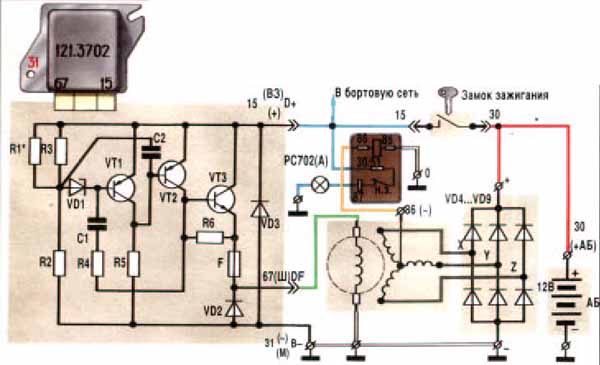Thanks for the picture, I see green wire is even the same color. Is there a forum post or some additional details about this picture

I wonder what VD3 is about. I see darling-ton pair transistors, with an analog bias current. The bias current from VT1, will turn on VT2 and VT3 controlling to 14.4V-ish. I wonder if the resistor values are know, or if the VD1 is known.
I agree with rus84's schematic for driving the P-MOSFET. I think with a PWM attempt, you'll need a much larger diode for the equivalent of VD2, as the PWM will spike that diode very often, while the analog version will only spike it on engine stop. It might be worth while to consider a transistor setup with PWM drive to analog current control. However that's going to make some heat. Hmmm, there has to be a better way.






